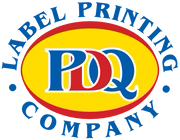
From Clunky to Cutting-Edge: The Evolution of Label Printers (and What It Means for Your Business)
Share
Labels might look simple, but the technology behind printing them has gone through a massive transformation. If you’ve ever fought with a smeared shipping label or wished your product stickers looked more “retail ready,” this quick tour from old-school to newest tech will help you decide what to use next—whether you’re in manufacturing, retail, food & beverage, healthcare, or e-commerce.
Phase 1: The Manual & Mechanical Era
Hand-lettering, rubber stamps, and address plates.
Early labeling was all manual: typewriters, stamps, and mechanical systems like addressograph plates. Durable, yes—but slow, inconsistent, and impossible to scale.
Business impact: labor-intensive, error-prone, and limited branding.
Phase 2: Impact Printing & Early Barcodes
Dot-matrix and daisy-wheel printers (1970s–1980s).
These introduced basic automation. With the rise of UPC/EAN barcodes, businesses could finally standardize SKUs and speed up checkout and inventory.
Business impact: faster than manual, but noisy, low-resolution, and poor graphics.
Phase 3: Thermal Transfer & Direct Thermal Take Off
Thermal transfer uses a ribbon to bond resin/wax to the label—highly durable for outdoor, chemical, and freezer applications.
Direct thermal uses heat-sensitive stock—no ribbon, great for short-life labels like shipping and receipts.
Business impact:
- Crisp barcodes, reliable scanning
- Rugged media options (synthetic, chemical-resistant)
- Lower total cost for high-volume black-and-white
Phase 4: Networks, Mobility & 2D Codes
As Ethernet/Wi-Fi/BT hit the floor, labelers moved onto carts and handhelds. 2D symbologies (QR, DataMatrix) packed more info into tiny labels—ideal for traceability and healthcare unit dosing.
Business impact: label where the work happens; fewer bottlenecks and mispicks.
Phase 5: Color Arrives—Laser & Early Inkjet
Full-color opened up on-demand packaging and compliant color icons (GHS, hazard diamonds). Laser was sharp but not always friendly to adhesives and specialty stocks. Early inkjet delivered color but could be slow and inconsistent on coated media.
Business impact: better shelf appeal and compliance, but trade-offs in media handling.
Phase 6: Modern High-Speed Color Inkjet (Today)
Newer engines and pigment/dye ink sets deliver retail-ready, full-color labels on demand—fast drying, resistant to water/UV (with pigment), and sharp enough for tiny text and dense barcodes. Pair them with roll finishers (laminate, slit, die-cut) and you’ve got a compact digital label “micro-press.”
Business impact:
- Print only what you need—no MOQs or wasted pre-prints
- Rapid SKU changes and seasonal runs
- Brand-grade color without outsourcing delays
Phase 7: Software, Workflows & Cloud
Modern drivers speak ZPL/driver languages, native PDF, or direct RIP. Cloud print and APIs integrate labels with your ERP/e-com/3PL, so data flows automatically from order to pack station. Color profiles lock in brand accuracy.
Business impact: fewer clicks, fewer mistakes, and audit-ready traceability.
Trends To Watch Next
- Linerless & eco stocks: less waste, lower shipping and storage.
- RFID/UHF: baked-in tracking for inventory and anti-counterfeit.
- Smarter automation: printers as IoT devices (usage analytics, predictive maintenance).
- AI-assisted layouts: auto-validate barcodes, contrast, and small-text legibility before printing.
Why Many Brands Are Moving to Afinia-Class Color Inkjet
If you’re ready to bring full-color, retail-grade labels in-house, the current generation of Afinia label printers is built for exactly that: fast, reliable color production with media flexibility and options for both dye (vibrant) and pigment (durable) inks. They’re designed for businesses that want to:
- Eliminate pre-printed label inventory and setup delays
- Print small-to-medium runs with consistent brand color
- Switch SKUs on the fly without wasting rolls
- Integrate with existing workflows, from Shopify/Woo/ERP to warehouse packs
👉 Explore the range here: Afinia Label Printers at PDQ Labels
Label printing has evolved from clunky, mono barcodes to on-demand, production-quality color—and that shift is a game-changer for growing brands. If you want faster turnarounds, tighter inventory control, and shelf-ready labels without the outsourcing overhead, modern color inkjet is the sweet spot.
Ready to see what that looks like in practice?
Browse the latest 👉 Afinia Label Printers at PDQ Labels



